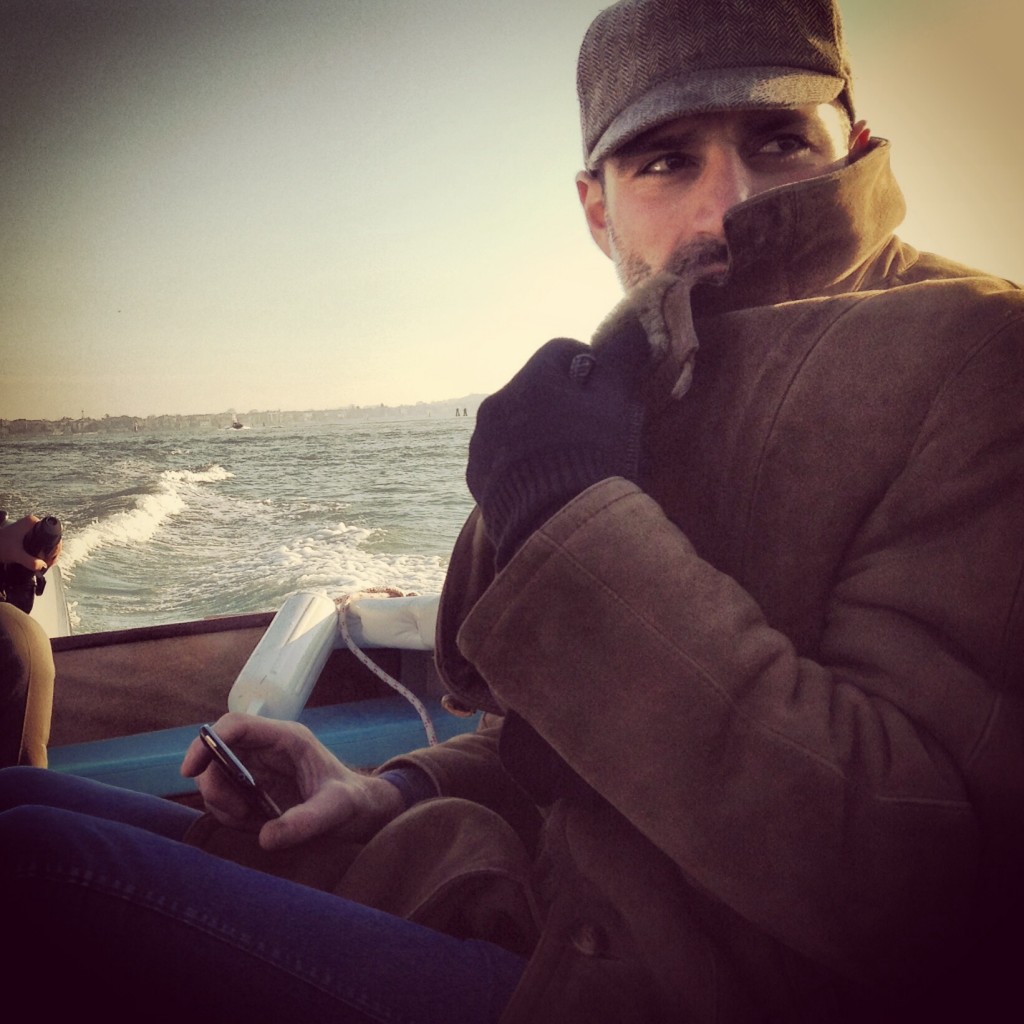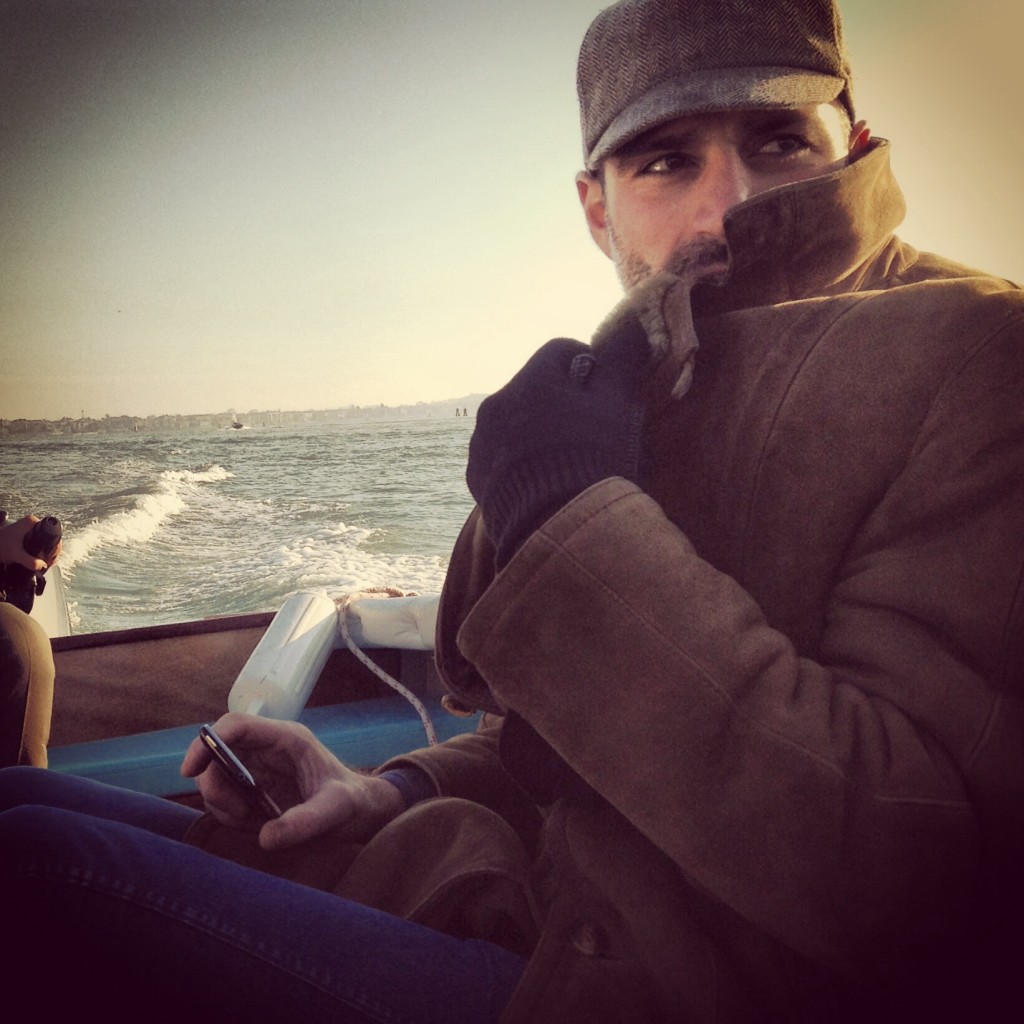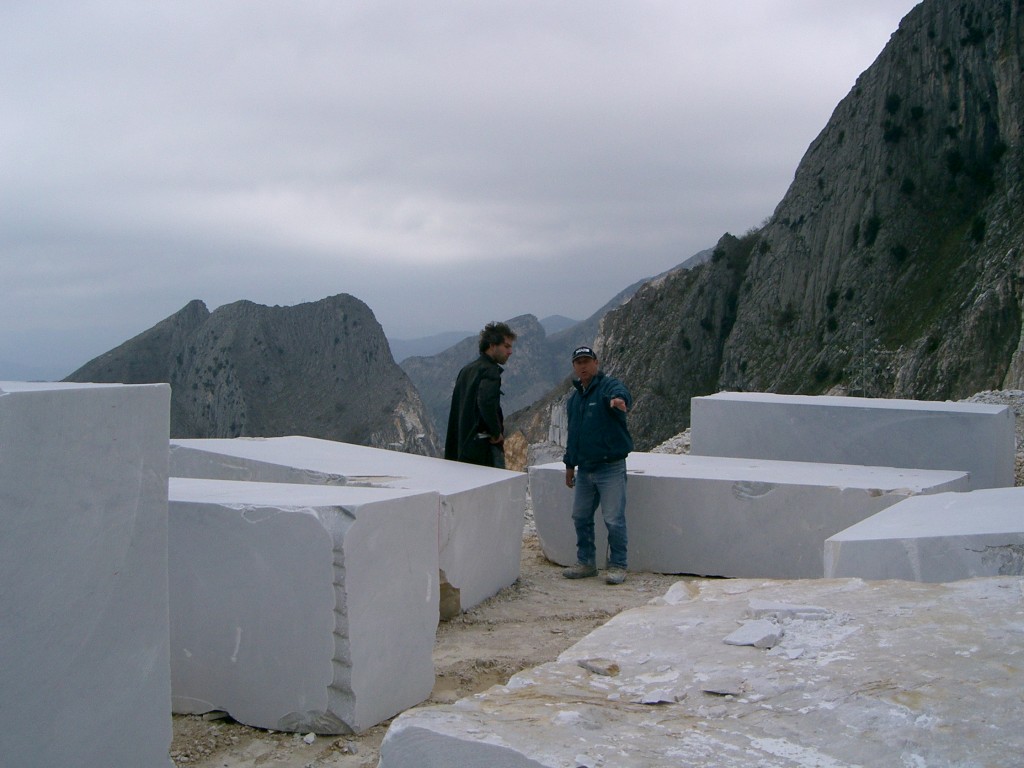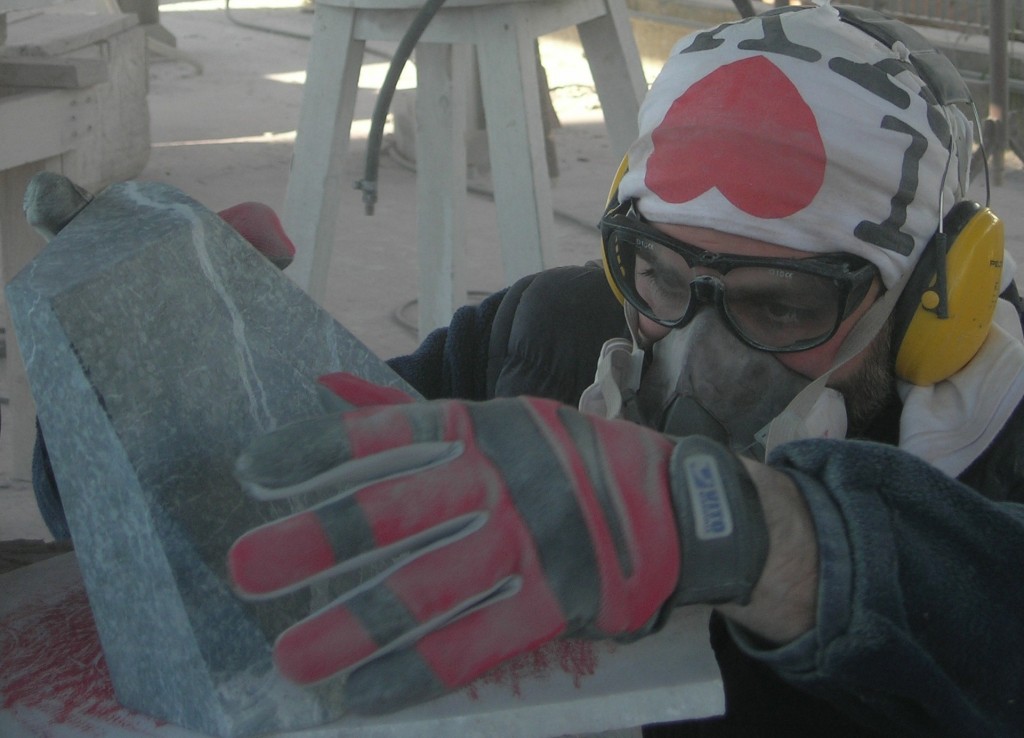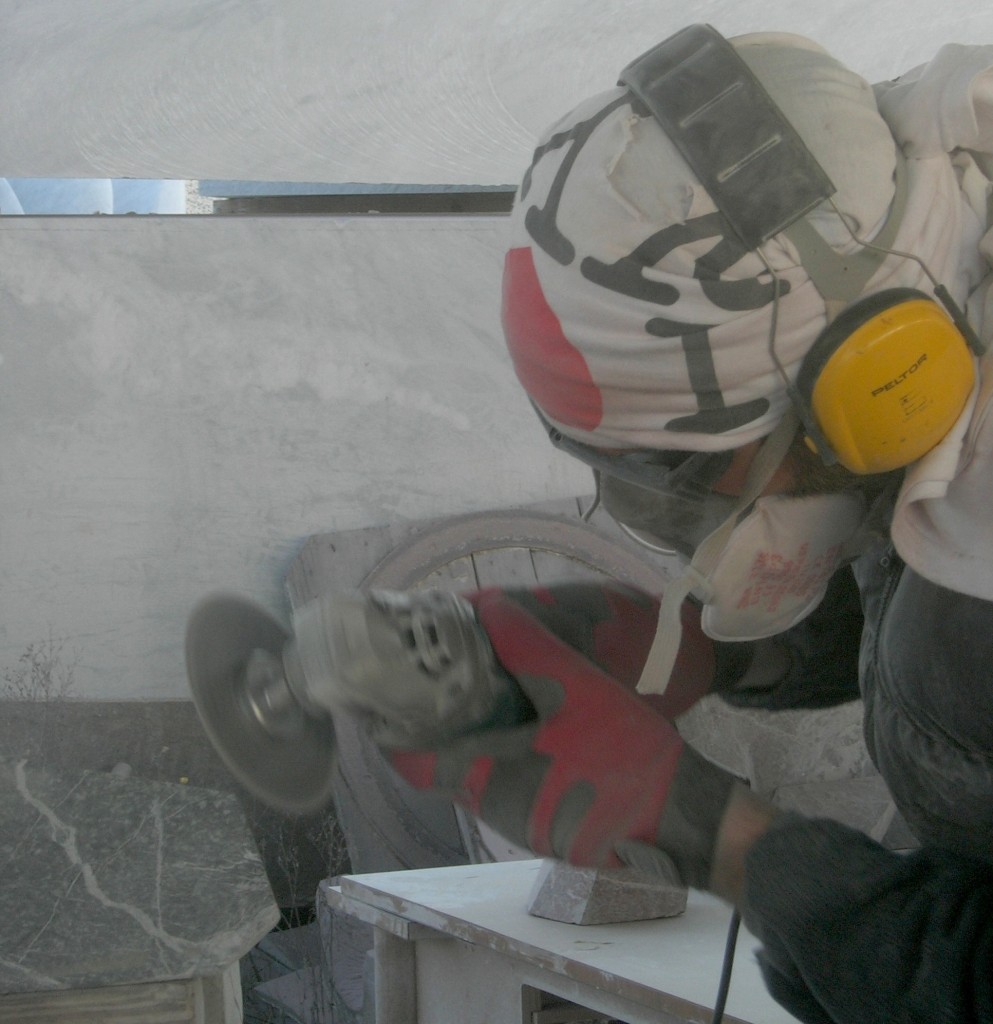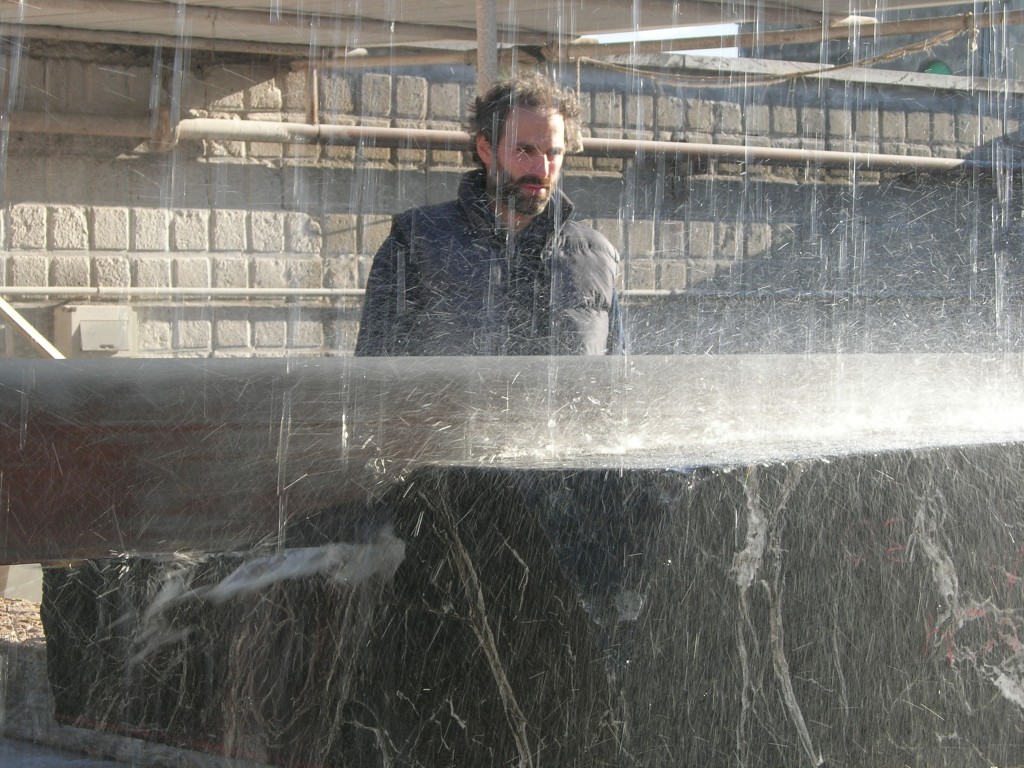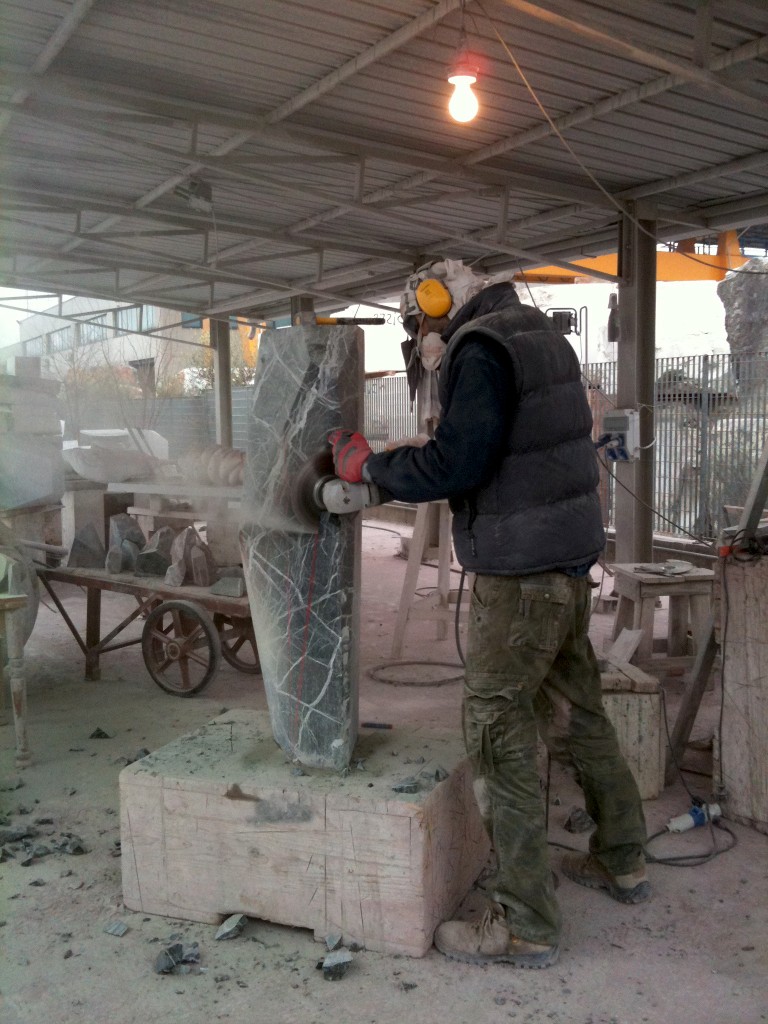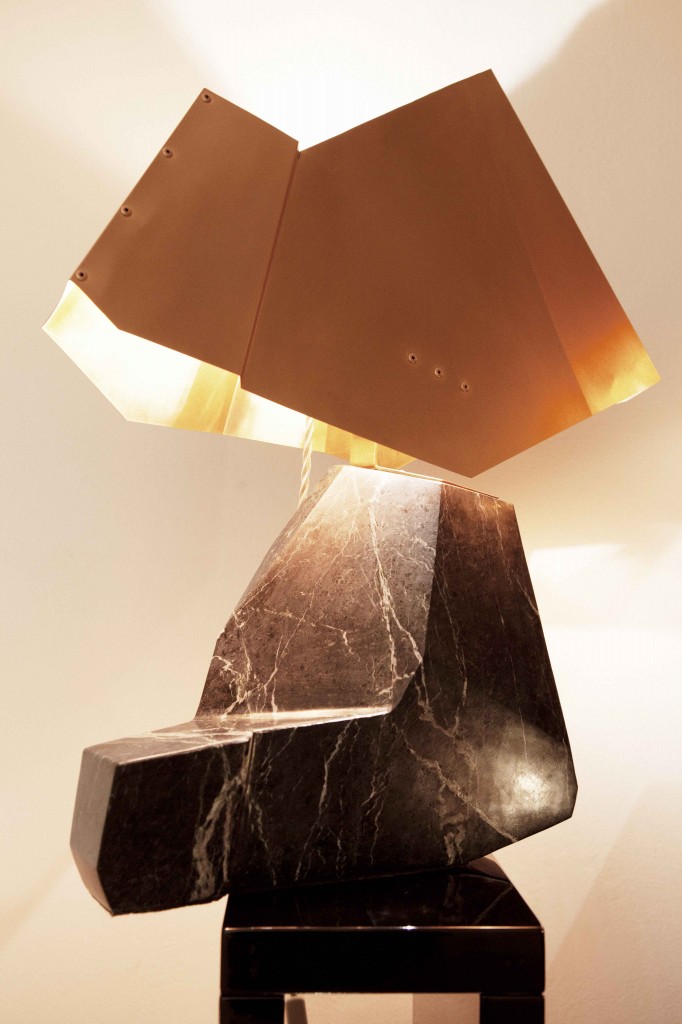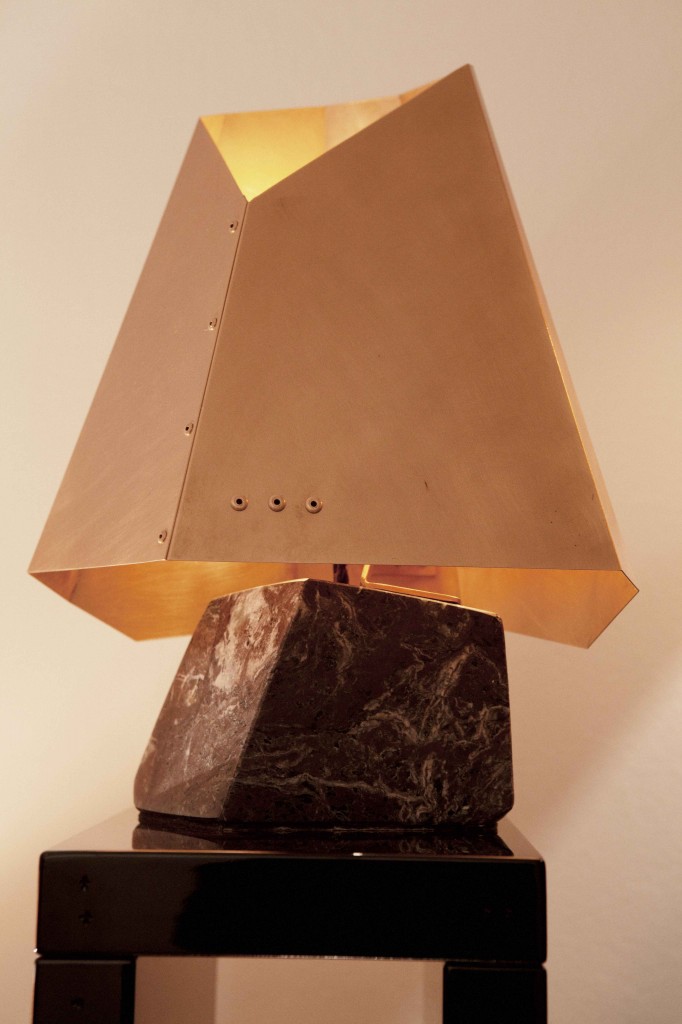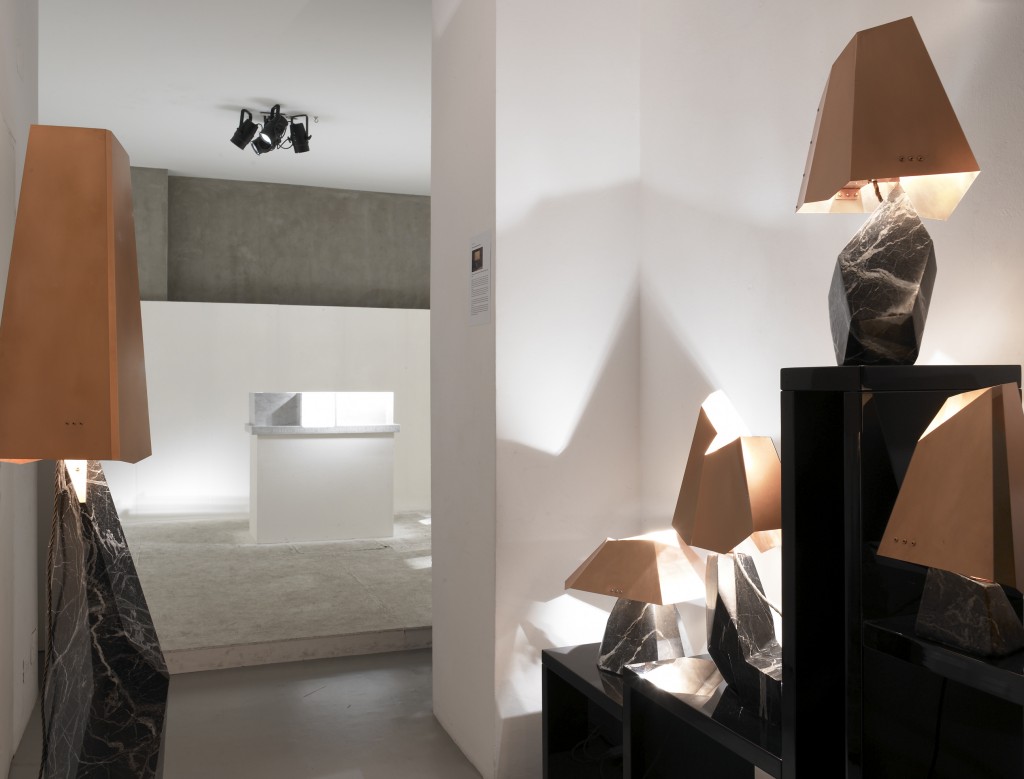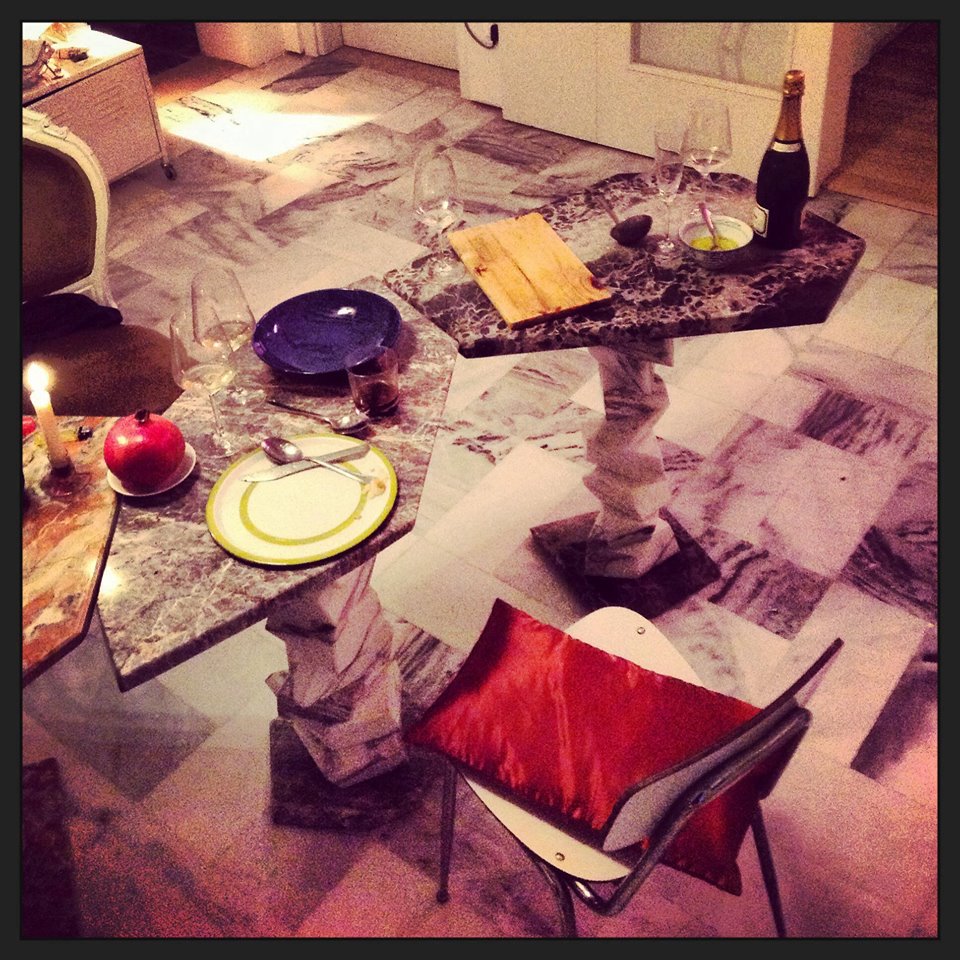Barometro, copper and marble sculptures dressed up as lamps
Giacomo Ravagli, 32 years old born in Tuscany, started to make sculpture when he was 18: he didn’t apply for a fine art academy or for a sculpture MA but searched for a long apprenticeship in the best artisanal marble workshops located in Pietrasanta (Lucca, Tuscany), the heart of marble quarries and industry in the world together with the other Tuscan city, Carrara.
His first teacher, the craftsman Sergio, was more than the double of his years. Sergio taught him all he knew – but without words. To teach, he was used to show how to carve: marble processing is noisy and highly dusty so talking is difficult, maybe unnecessary, according to Sergio. It is enough to carefully observe, try and try again, in order to slowly start to learn how to build, how to dominate the ‘element’. Drenched in the natural light of the day – from sunrise to sunshine.
Ten years have been spent by Giacomo Ravagli to work behind the scene – his backdrop the stunning lunar landscape of Alpi Apuane mountain chain – by making monumental works on behalf of famous International artists (from Pietro Cascella to Knut Steel, from Nelly Sarmiento to Louise Bourgeois). He then acquired great style and ability in the furniture and jewellery design thanks to commissions for private collectors. By interrupting his hand-to-hand combat with the stone, on 2008 he left Italy for New York working as decorator and interior designer. Since 2010 he moves on with the idea to take fine art sculpture apart from his practice and start to make contemporary design.
Barometro Lamps is his first official collection, bought with world exclusive from Nilufar for its fine catalogue, Edizioni Nilufar, on 2011: Nilufar is the main Italian gallery for limited edition design. With different setting and pieces, the collection has been on show and sold at PAD and shortly after at Milan Design Week in the gallery headquarter. A special piece has been presented and sold at Design Miami|Basel the same year. Then the lamps travelled the world, being on show from London to Turin, from Emirates to France again. After his first lucky design collection, Giacomo continued and designed also metal pieces, as the stunning modular lighting family Tunisia and a reclaimed marble furniture collection (Alpi), together with Home Around a Void tables and consoles made of fine marbles.
These words have been collected via a chat with the designer during a very stormy night in Tuscany on 2010 and stand also as his first official interview. At that time, Giacomo was 29 years old.
Today the Barometro have been included in the Design Museum at La Triennale (Milano), where the new setting dedicated to autarchy has been opened on April 3rd. Just in time for the Milan Design Week 2014. Here their video making of.
How did you start to make design?
Actually it came out quite naturally and I never thought I would have done this kind of things. I just followed the opportunity that life and work gave to me, and I started to be interested in design and making furniture because basically I needed to work and make money while I was in NY. Then I started to enjoy it.
Barometro Lamps is your first collection. How difficult is to design and make, all by hand, a lamp? How does the idea arise in you? How do you prepare the model from which you realize the finished piece? How do you choose the materials? How many pieces did you prepare to show at the International fairs you’ve been invited to?
The idea of realizing a lamp collection started while I was in NY and I met Paul Johnson of Johnson Trading Gallery, a well know design gallery. Paul told me he needed ideas for lamps so I started to think about it, and about how to put together my long experience as a marble sculptor and a new idea of a design product. After research and study of materials and sources in order to reach new solutions, in December 2010 I actually decided to physically realize something. If I don’t have to work with companies or delegate the execution of the work to somebody else I never make preparatory drawings and I prefer to work directly the marble, or maybe just realize a little model or maquette in plaster or paper just to fix the idea. I like to discover the work during the process, and be inspired from the materials. You have to be flexible if you work this way, but I find out that I do the best when I just listen for where I’m trying to go with it, and where I can go, and not try to ‘rush it’. Not try to make up things, but just let them come out. Then I’m a lot better off. In the end, it’s all about problem solving. And this is the case of Barometro lamps.
In the beginning I didn’t have much money to invest, and the marble is expensive, you know. So I decided to work on some leftovers of rosso levanto marble I had from a previous commission. What I did is basically give a rational shape to the irrational and irregular form of the row pieces, then sanded and polished them, like diamonds. For the copper lampshades I decided the form and size in an endless game of golden proportion with the marble base. So far I realized 18 pieces, 16 for the exhibits and 2 artist proofs.
Before Barometro Lamps collection, which objects or designs you’ve produced?
None. Barometro Lamps is my first design collection.
Which is your relation with marble and other stones? Which kind of material would you like to work with to make furniture if you imagine to born again?
Marble is a noble material. It’s something that you have to deeply understand and love. Marble teaches you a lot: imagination, patience and stubbornness. And guts. You have to be brave, daring with marble. You have to drop your inhibitions to reign over the marble, modify it, soften it, deflate it, even kill it. I work also with other materials, but I prefer marble because is more versatile compared with granite, for example, or onyx. I like the idea of making design in marble and I would probably do the same.
What your next project will be?
My next project, Uscio Fasullo, is a curtain made of little pieces out of marble. The work title comes out from a text by Bruno Munari. What I can only say is that it’s a really funky project, very colourful and a little kitschy. It looks like the plastic curtains that my grand mother used to have in the kitchen to prevent flies. I’m sure children will love it!
